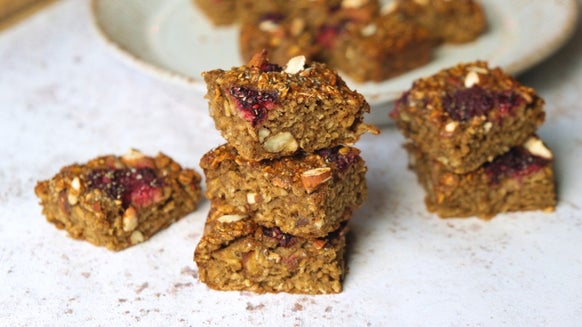The Dumbbell Reverse Fly Exercise | Proper Form & Lift Technique

By Myprotein Writer
Jamie Wykes Hobday
Some like to train them on back day, some like to train them on shoulder day….Some even dedicate a whole session solely to rear deltoids as they are often a common weak point in physiques. One thing is for sure, you cannot neglect them regardless. The following passage is going to depict one of, if not the most effective exercises for developing rear delts.
Reverse dumbbell flyes are a bilateral exercise in the horizontal plane of movement that will strengthen the upper back and the posterior side of the shoulders. This exercise will use a vast number of muscles located in the shoulders and back, hence why they are so commonly used in back training sessions.
The primary muscles allocated to this exercise in particular are the mid trapezius, the rhomboids and the rear deltoid. However, it is the rhomboids which are the main muscles used throughout the movement!
The Dumbbell Reverse Fly |
Benefits
? Posture Benefits
The muscles pulling the shoulder forwards and those pulling the shoulder backwards are both absolute necessities for correct posture and day to day function patterns. The dumbbell reverse fly helps to strengthen these muscles. These postural and functional benefits will improve everyday living routines and furthermore enhance any form of athletic performance.
? Numerous Muscles Involved
The dumbbell reverse fly could technically be described as effective as many of the big muscle building compound movements in the sense that it targets such a large amount of muscles in one simple movement. In one movement pattern you are hitting the rotator cuff muscles, the upper back and the scapula.
? Injury prevention
Due to the fact that the reverse fly has the ability to target the rotator cuff, it should be an exercise involved in programmes that focus on injury prevention. The retracting of the scapula movement pattern will co-operate with the rotator cuff muscles, strengthening them immensely and preventing them from becoming injured.
Due to the fact that the rotator cuff muscles are worked so intensely throughout so many functional activities, in addition to a number of resistance training movements, they are quite a commonly injured muscle. Thus, it is essential that they are strengthened regularly thourhogut our training regimes.
Variations on the reverse fly are just as effective, as long as scapula retraction is occurring, then they can be considered. Look no further than cable pull a-parts, swissball reverse flies and most horizontal row movements. Change it up!
How to Perform |
The Dumbbell Reverse Fly

? Gently lie down on an incline positioned bench with the stomach and chest lying flat down. Whilst this position has taken place, one dumbbell should be in each hand with the arms extended downwards, with respect to the grip of the exercise, the palms facing inwards towards each other in a neutral grip.
? Whilst the elbows are slightly bent, exhale your breath and use your elbows to pull the dumbbells away from each other laterally. At this stage, arm involvement should be minimal and total focus should be on scapula retraction pulling through the elbows.
? At the top of the movement, squeeze the shoulder blades together. Remember the muscle you are trying to target and aim to maintain a sound mind:muscle connection throughout.
? Once the dumbbells have been lifted high enough to the point where they are parallel to the gym floor, then the weights can be slowly released to where they started from. At this point, you should be inhaling your breath (breathing in).
? Try not to allow the dumbbells to bounce off each other at the eccentric (lowering) phase of the exercise as this could detrimentally impact the tension placed under the muscle.
Training Implications
Warm-Up
Pre-Exhaust Set
Cable Rope Facepulls: 3 Drop-set Sets aiming for 15 reps on each ‘drop’.
The Workout
| Shoulder Workout | Sets & Reps |
| Smith Machine Shoulder Press | 3x8-12 |
| Single Arm Standing Shoulder Press | 3x10 Each Arm |
| Dumbbell Reverse Flies | 3x15 |
| Cable Pull Aparts | 3x12 |
| Seated Rope Facepulls | 3x15 |
Post-Workout
Static Stretches: Focusing on the shoulder joint/rotator cuff and rear aspect in particular.
Apply some injury rehabilitation movements for the rear deltoid such as resistance band pull apart or stiff arm push ups.
The Dumbbell Reverse Fly |
Common Mistakes
? Try not to allow any arching of the lower back as this can lead to injury and also make the stimulus of the exercise less effective. To prevent this, ensure that your training partner or spotter is positively critiquing your form and technique.
? Don’t allow too much tension to be placed on your biceps, always aim to pull through your elbows and focus on scapula retraction, not bicep contraction.
? Not cooling down after training will lead to increased likelihood of
Back Day, Posterior Day, Shoulder Day…. Whatever day, just don’t neglect your rear delts. Don’t be that guy!
How to Perform | Recap
The Dumbbell Reverse Fly
1) Lie down on your stomach on an incline positioned bench. One dumbbell in each hand with the arms extended downwards, palms facing inwards towards each other in a neutral grip.
2) Whilst the elbows are slightly bent, exhale your breath and use your elbows to pull the dumbbells away from each other laterally.
3) At the top of the movement, squeeze the shoulder blades together.
4) Once dumbbells have been lifted high enough to the point where they are parallel to the floor, then the weights can be slowly released to where they started from.
Try not to allow the dumbbells to bounce off each other at the eccentric phase of the exercise as this could detrimentally impact the tension placed under the muscle.








